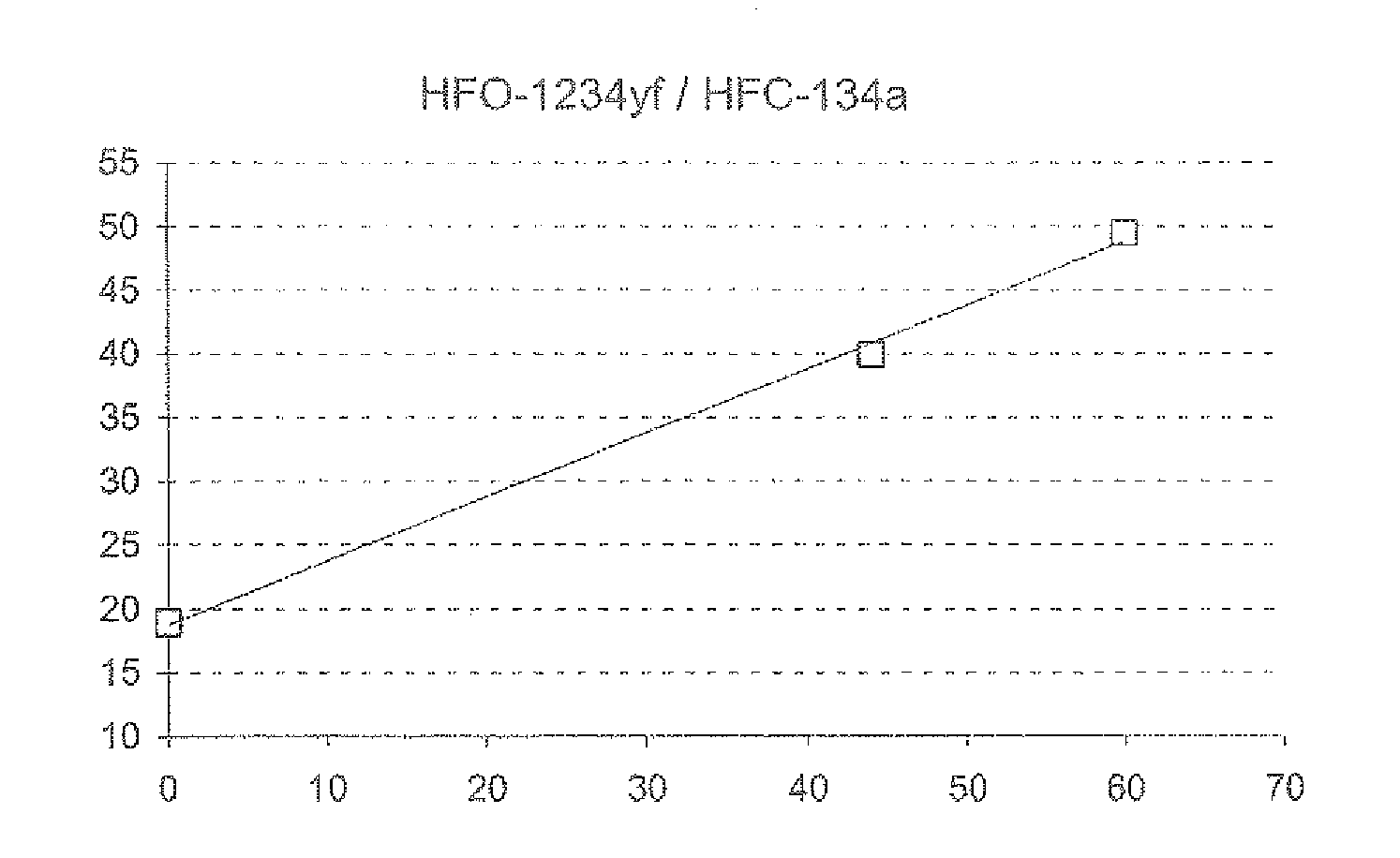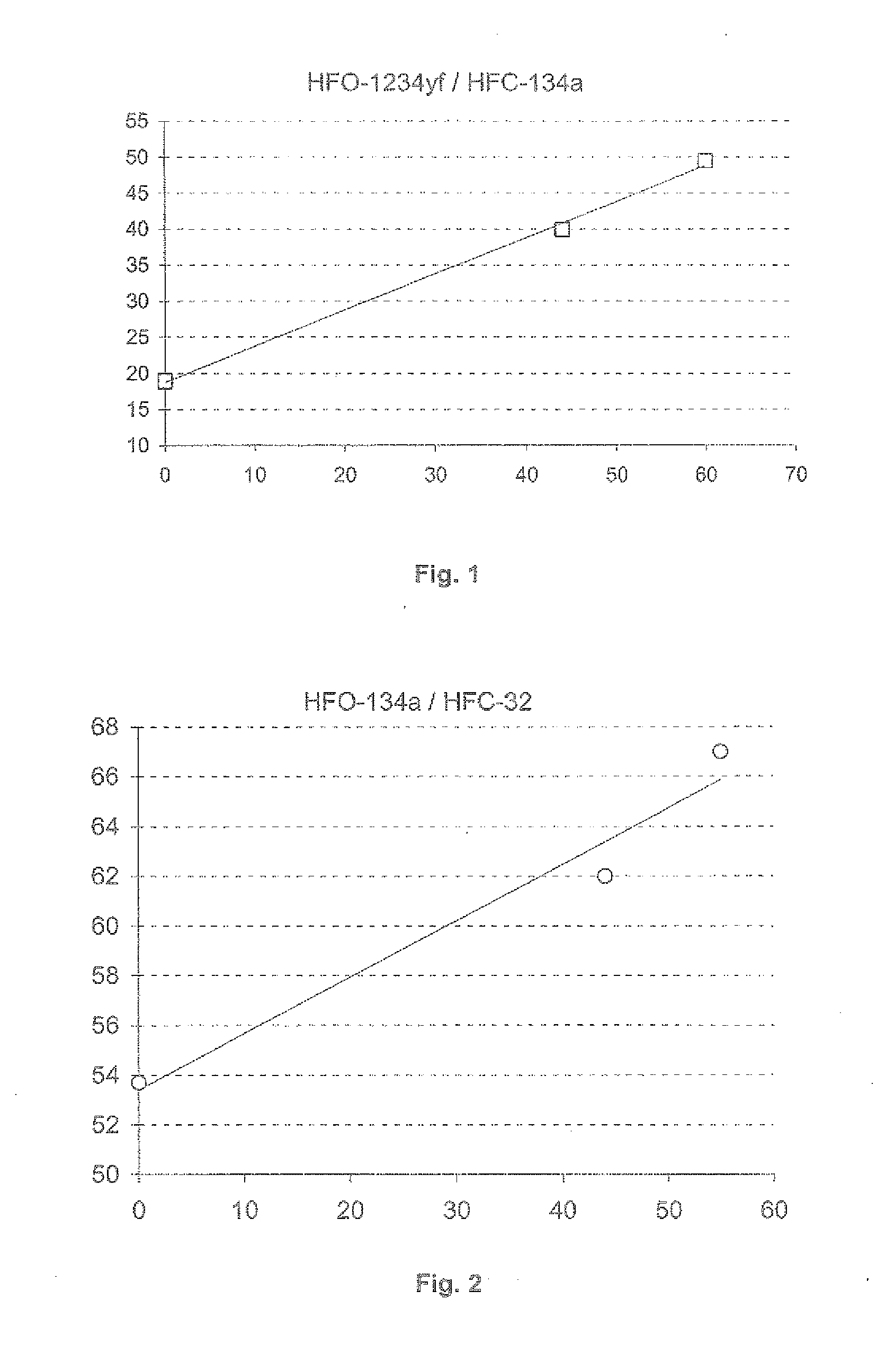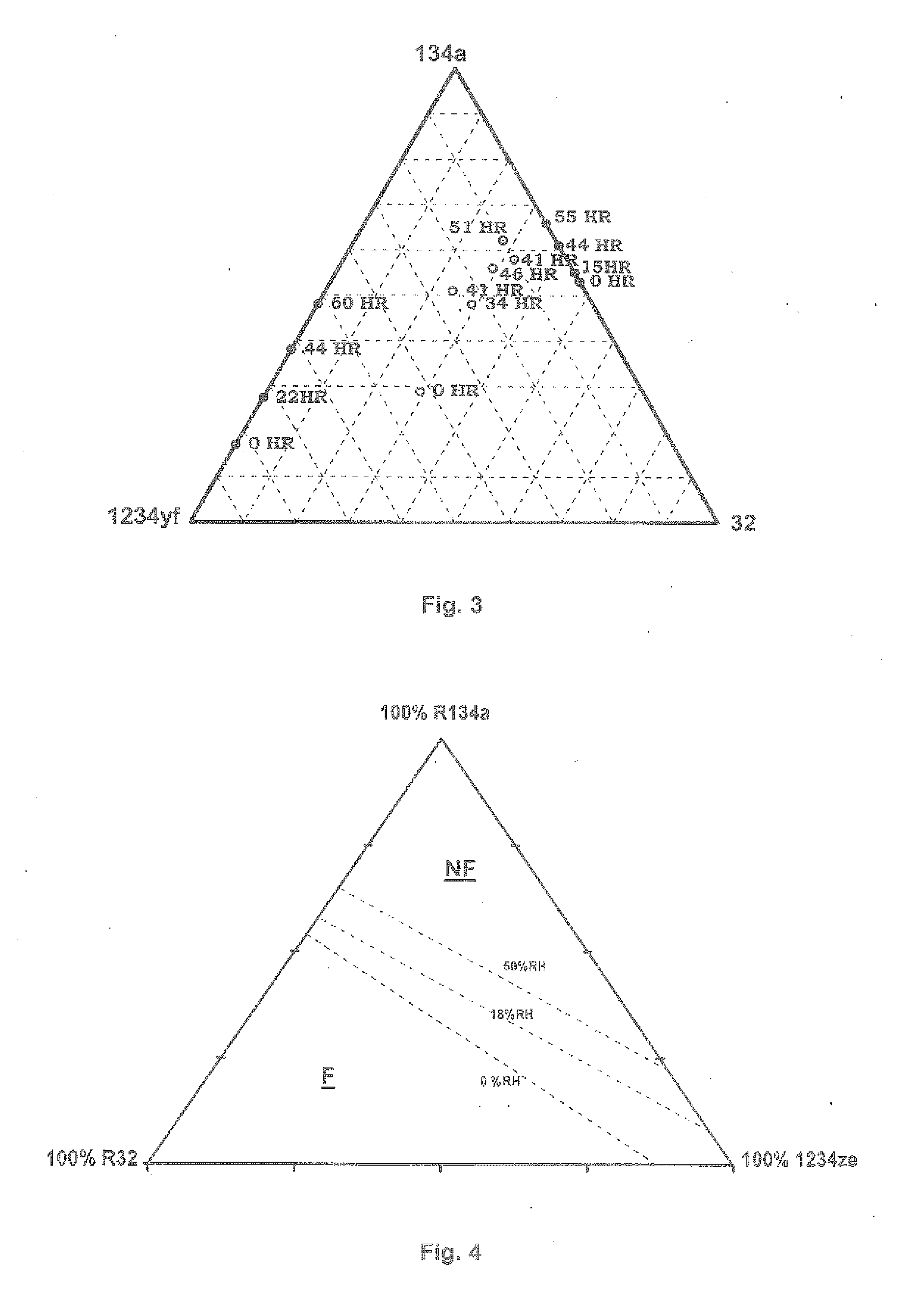Heat-transfer fluids having reduced flammability
- Summary
- Abstract
- Description
- Claims
- Application Information
AI Technical Summary
Benefits of technology
Problems solved by technology
Method used
Image
Examples
example 1
Influence of Relative Humidity on the Flammability of HFO-1234yf
[0290]Flammability tests were carried out on HFO-1234yf under humid conditions and under dry conditions according to the protocol of the standard ASTM E681. A glass sphere of gas is arranged in an oven maintained at 25° C. The sphere is placed under vacuum, the gas to be tested is introduced, made up with air to atmospheric pressure, a spark is released in the mixture thus prepared and any flame front is observed over more than 90° with respect to the ignition point. Then the quantity of gas is modified until an angle greater than or equal to 90° is reached, defining the ignition and non-ignition zone. The tests are carried out at 60° C.
[0291]The air used in the test is either ambient air with relative humidity monitored with a hygrometer (between 35 and 45% relative humidity, i.e. a water content of 12 mbar on average); or Praxair 5.0 synthetic dry air (with a maximum specification of 2 vpm of water).
[0292]Under humid ...
example 2
Influence of Relative Humidity on the Flammability of the HFO-1234yf / HFC-134a Mixture
[0295]Tests are carried out in a manner similar to Example 1 on HFO-1234yf / HFC-134a binary mixtures of different compositions. Air with 60% relative humidity (ambient air, reference relative humidity of 50% monitored by a hygrometer), air with 40% relative humidity (obtained by dilution of ambient air with dry air), air with 20% relative humidity (obtained by dilution of ambient air with dry air) and dry air with approximately 0% relative humidity.
[0296]For each condition of relative humidity a maximum HFO-1234yf content (or a minimum HFC-134a content) in the binary mixture making it possible to have a non-flammable mixture (no flame propagation over more than 90°) is determined.
[0297]The results are represented in FIG. 1. The loss of 1% relative humidity makes it possible to reduce by approximately 0.5% the proportion by mass of HFC-134a without degrading the flammability of the mixture.
example 3
Influence of Relative Humidity on the Flammability of the HFC-134a / HFC-32 Mixture
[0298]Tests are carried out in a manner similar to Example 1 on HFC-134a / HFC-32 binary mixtures of different compositions. Air with 55% relative humidity (ambient air, reference relative humidity monitored by a hygrometer), air with 44% relative humidity (obtained by dilution of ambient air with dry air), air with 20% relative humidity (obtained by dilution of ambient air with dry air) and dry air with approximately 0% relative humidity.
[0299]For each condition of relative humidity a maximum HFC-134a content (or a minimum HFC-32 content) in the binary mixture making it possible to have a non-flammable mixture (no flame propagation over more than 90°) is determined.
[0300]The results are shown in FIG. 2. The loss of 1% relative humidity makes it possible to reduce by approximately 0.2% the proportion by mass of HFC-134a without degrading the flammability of the mixture.
[0301]The flammability of the HFC-13...
PUM
 Login to View More
Login to View More Abstract
Description
Claims
Application Information
 Login to View More
Login to View More - R&D
- Intellectual Property
- Life Sciences
- Materials
- Tech Scout
- Unparalleled Data Quality
- Higher Quality Content
- 60% Fewer Hallucinations
Browse by: Latest US Patents, China's latest patents, Technical Efficacy Thesaurus, Application Domain, Technology Topic, Popular Technical Reports.
© 2025 PatSnap. All rights reserved.Legal|Privacy policy|Modern Slavery Act Transparency Statement|Sitemap|About US| Contact US: help@patsnap.com



